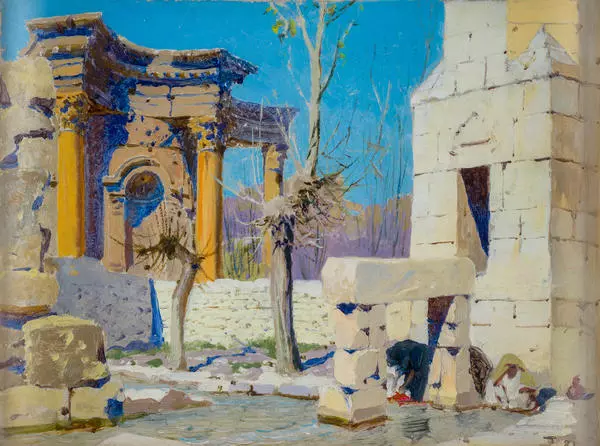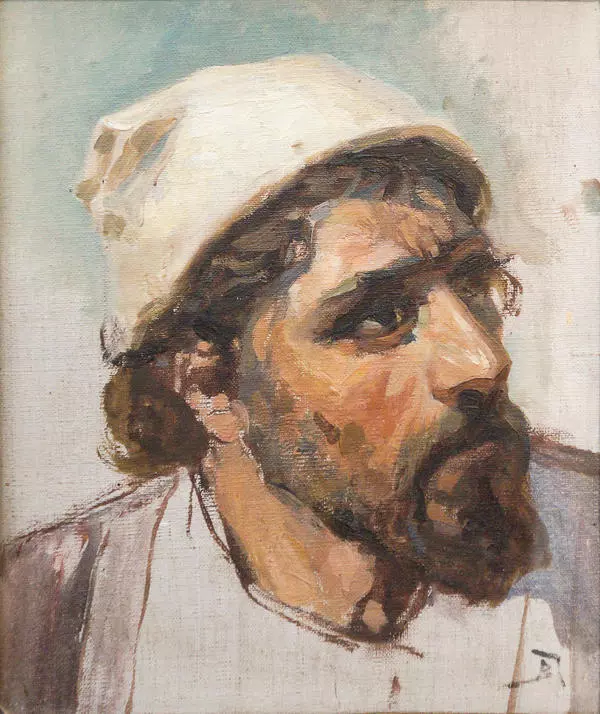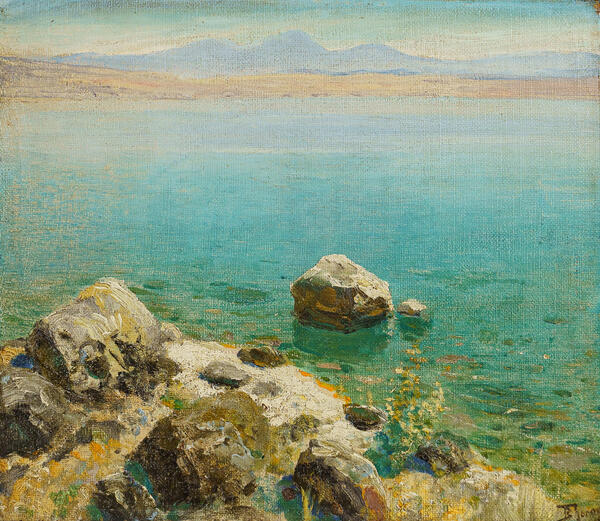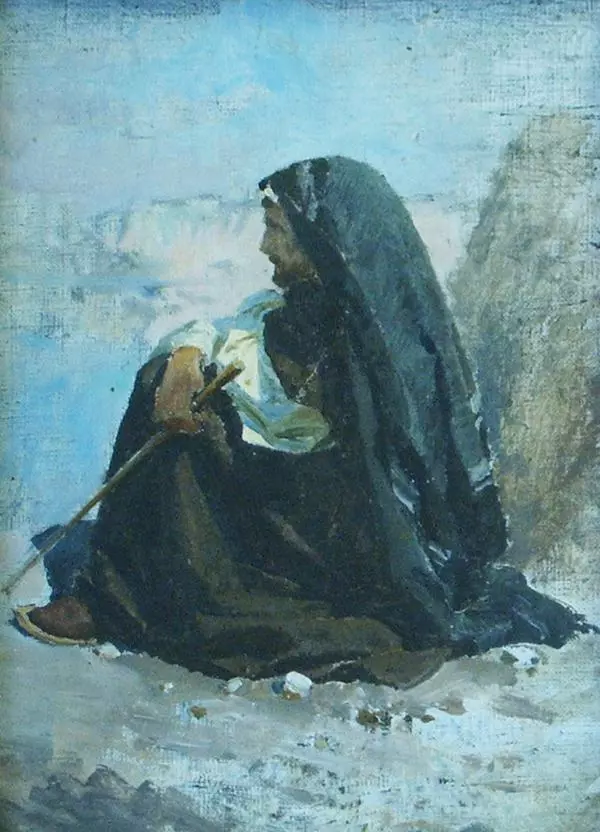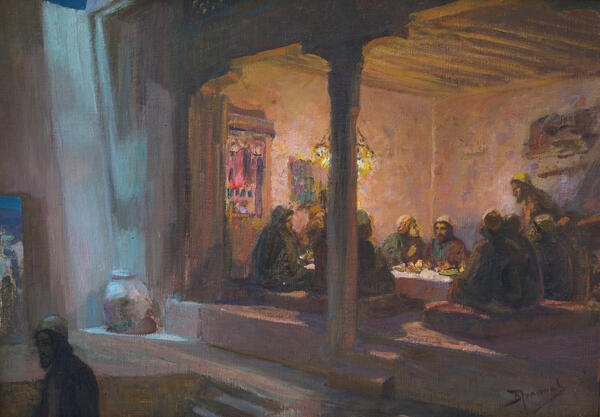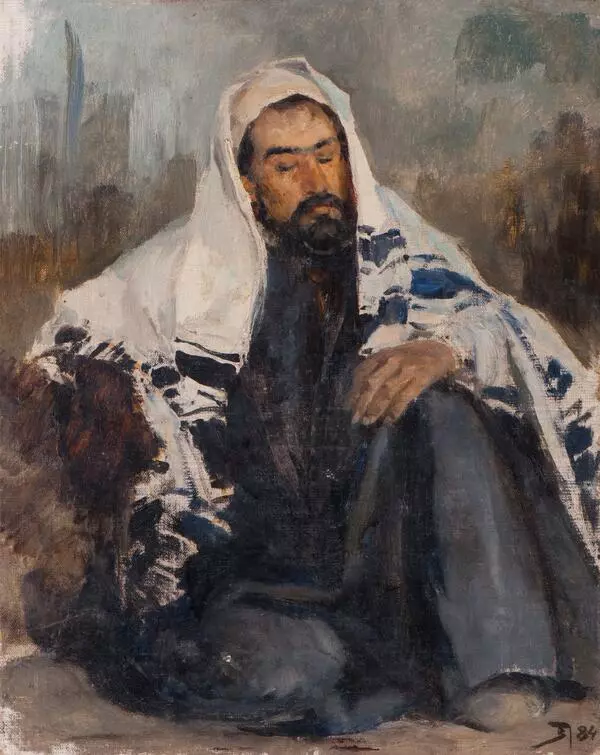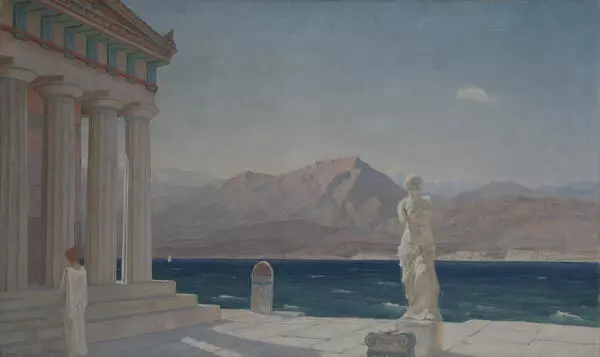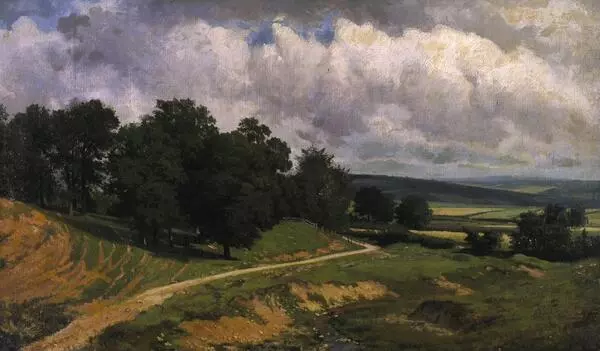The painting “Arab” from the collection of the Ostrogozhsk Museum of History and Art is a study for “Christ and the Woman Taken in Adultery” by the famous artist Vasily Dmitriyevich Polenov.
The composition of this painting reflects the story of Jesus and the woman taken in adultery — a passage found in the Gospel of John. The painter came up with the idea to depict this scene in the late 1860s and made the first studies in the early 1870s. It took him around 15 years to complete the painting. During this time, Vasily Polenov traveled across the Middle East (1881–1882) and Italy (1883–1884). Polenov painted “Arab” after these trips, with the sitter for the study being his favorite student Konstantin Alexeevich Korovin.
In 1882, Polenov took charge of the landscape workshop at the Moscow School of Painting, Sculpture and Architecture. He also continued working at the still life workshop. At the same time, Konstantin Korovin appeared at the school. He had already completed courses there and was studying at the Academy of Arts. Over time, Korovin became one of the most welcome guests at the house of Vasily Polenov who appreciated and supported Korovin’s work on his creative quest. By taking lessons from Polenov, the young artist was able to paint with more freedom and confidence. At the same time, the teacher learned a lot from him as well. That said, the Polenovs believed that Korovin wasted his talent due to his mindlessness, lack of diligence, and inability to go through with the job. However, according to Korovin’s friends, that was not the case: his mindlessness was only an illusion, he worked hard on a daily basis and could sometimes complete three studies in a single day.
“Christ and the Woman Taken in Adultery” was presented at the 15th exhibition of the Society for Traveling Art Exhibitions that opened in St. Petersburg on February 25, 1887. There, the painting was bought by Emperor Alexander III. After that, the painting was stored at the Winter Palace and later transferred to the Russian Museum after it was founded in 1897.
On the one hand, “Christ and the Woman Taken in Adultery” is considered an attempt to provide a realistic interpretation of the image of Jesus and the story from the Gospels. On the other hand, art experts recognize that it was influenced by Late Academicism and comment that “Polenov’s painting is the most significant and serious attempt” to revive large-scale academic history painting.
The composition of this painting reflects the story of Jesus and the woman taken in adultery — a passage found in the Gospel of John. The painter came up with the idea to depict this scene in the late 1860s and made the first studies in the early 1870s. It took him around 15 years to complete the painting. During this time, Vasily Polenov traveled across the Middle East (1881–1882) and Italy (1883–1884). Polenov painted “Arab” after these trips, with the sitter for the study being his favorite student Konstantin Alexeevich Korovin.
In 1882, Polenov took charge of the landscape workshop at the Moscow School of Painting, Sculpture and Architecture. He also continued working at the still life workshop. At the same time, Konstantin Korovin appeared at the school. He had already completed courses there and was studying at the Academy of Arts. Over time, Korovin became one of the most welcome guests at the house of Vasily Polenov who appreciated and supported Korovin’s work on his creative quest. By taking lessons from Polenov, the young artist was able to paint with more freedom and confidence. At the same time, the teacher learned a lot from him as well. That said, the Polenovs believed that Korovin wasted his talent due to his mindlessness, lack of diligence, and inability to go through with the job. However, according to Korovin’s friends, that was not the case: his mindlessness was only an illusion, he worked hard on a daily basis and could sometimes complete three studies in a single day.
“Christ and the Woman Taken in Adultery” was presented at the 15th exhibition of the Society for Traveling Art Exhibitions that opened in St. Petersburg on February 25, 1887. There, the painting was bought by Emperor Alexander III. After that, the painting was stored at the Winter Palace and later transferred to the Russian Museum after it was founded in 1897.
On the one hand, “Christ and the Woman Taken in Adultery” is considered an attempt to provide a realistic interpretation of the image of Jesus and the story from the Gospels. On the other hand, art experts recognize that it was influenced by Late Academicism and comment that “Polenov’s painting is the most significant and serious attempt” to revive large-scale academic history painting.









